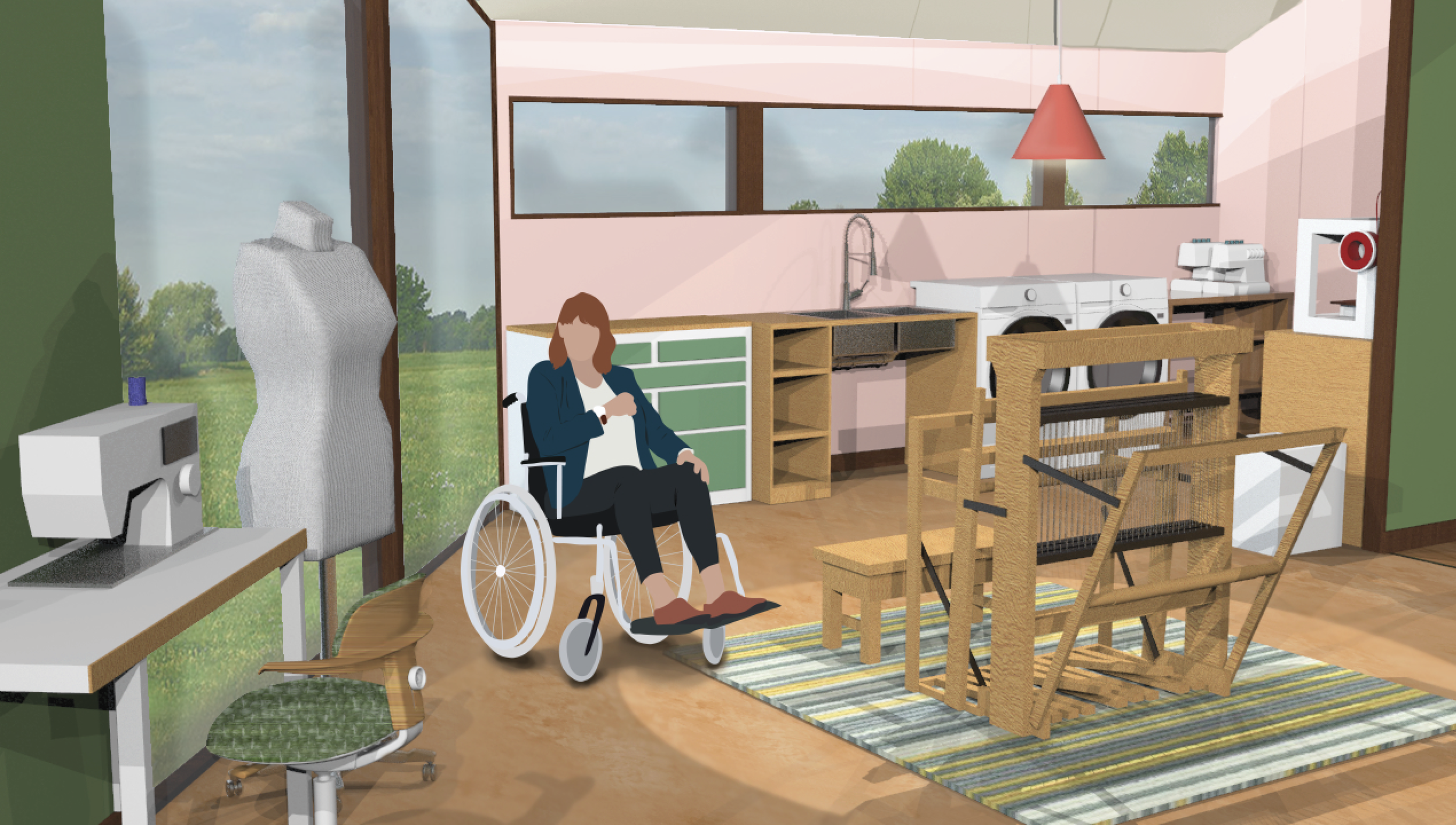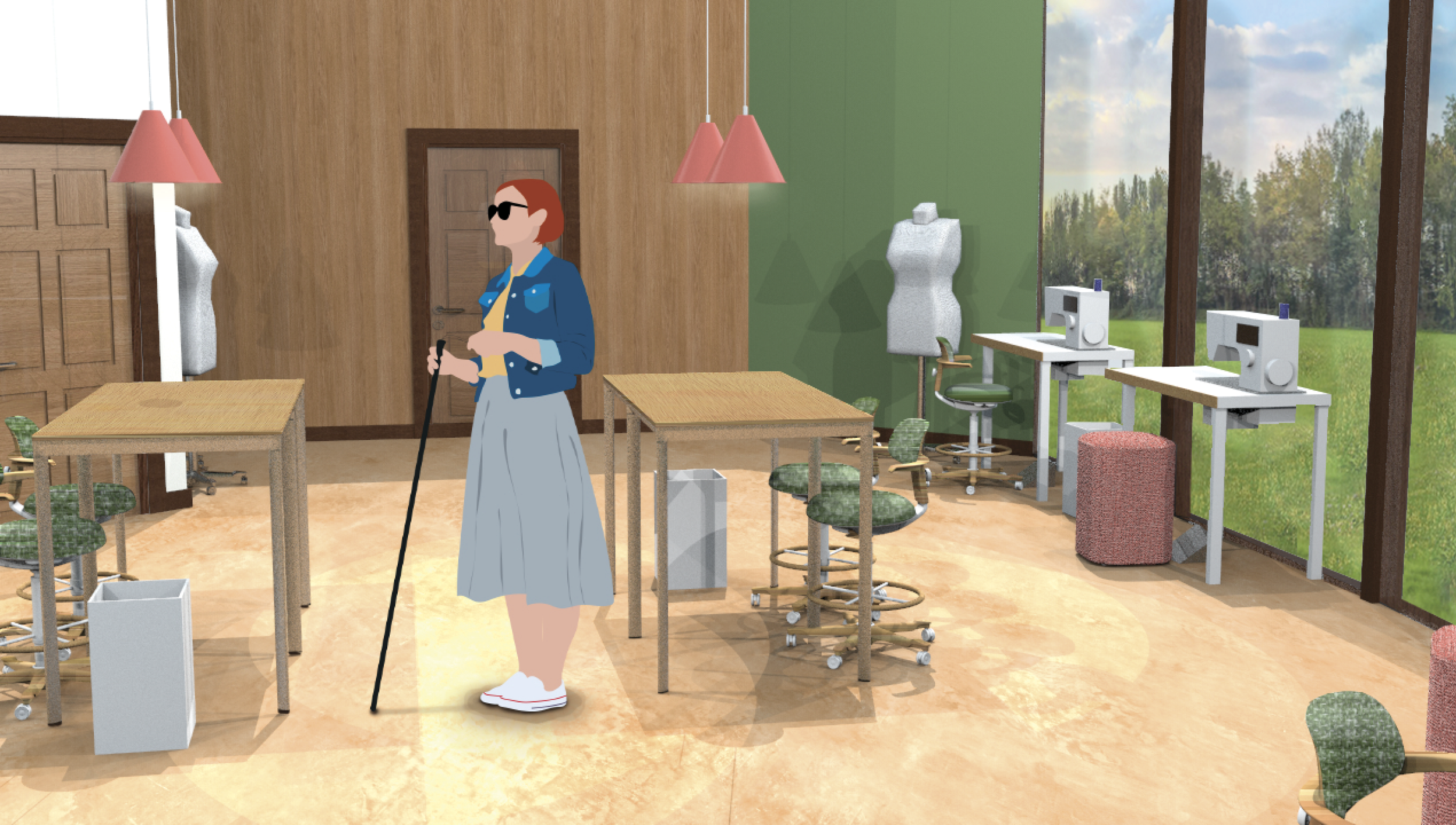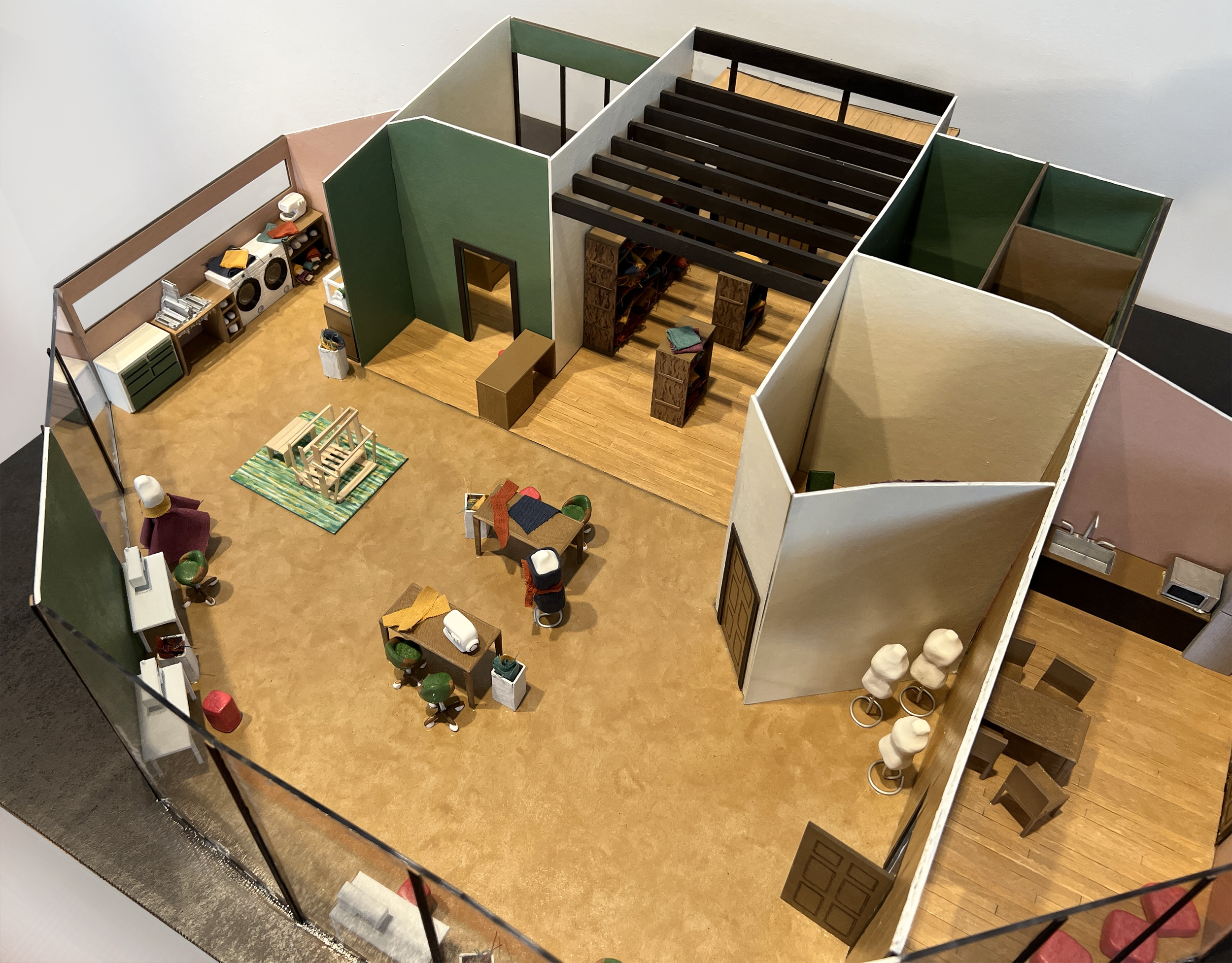Jenniffer Omaitz
A studio course that introduces students to foundational concepts of interior space. Topics will include studies of room and its contents; color theory and interior color; design and human behavior; representation through sketching, orthographic drawing, collage, and model building; and digital techniques. Design thinking and iterative design work-process will be emphasized. Prerequisites: AED 10101and ID 14011. Pre/corequisites: ID 10601.; 4.000 Credit hours (Letter grade), 8 Contact hours (not including time and effort for out-of-class assignments); Schedule Type: Studio; NOTE: A minimum 2.500 overall GPA is required for advancement to the second year. Graduation requires a minimum 2.500 GPA in major requirements.
Emily Lucak
The Printery - Camphill Community, Kimberton, PA
The main principles of design that guided the making of ‘The Printery’ consisted of a stepping form existing on two grids. Upon entry, the curved gallery wall greets and guides the client, and helps to reinforce the linear flow of circulation between the two grids.
The textured brick reflects the bookmaking aesthetic along with
accentuating the primary creation spaces. Cement blocks support the secondary rooms in the building such as the rooms for the Admin and support staff. Hardwood flooring reinforces the building’s warmth, while maintaining a certain level of comfort in the feet and allows for easy cleanup. The dark ceiling brings a cozy feeling to the space, which makes it seem smaller than it truly is. Floor to ceiling glass walls are used to bring sunlight into the space, adding to the target aesthetic.
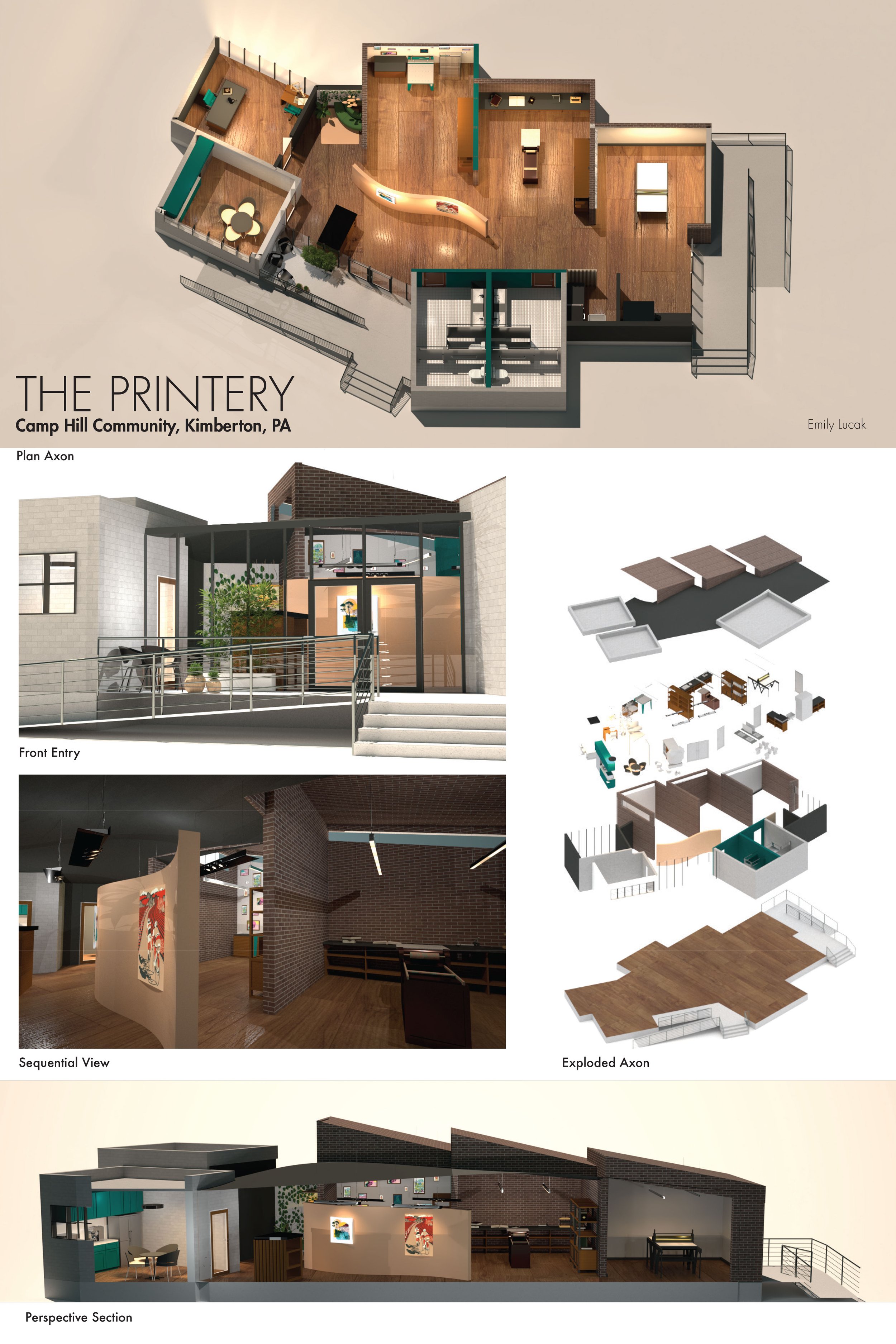

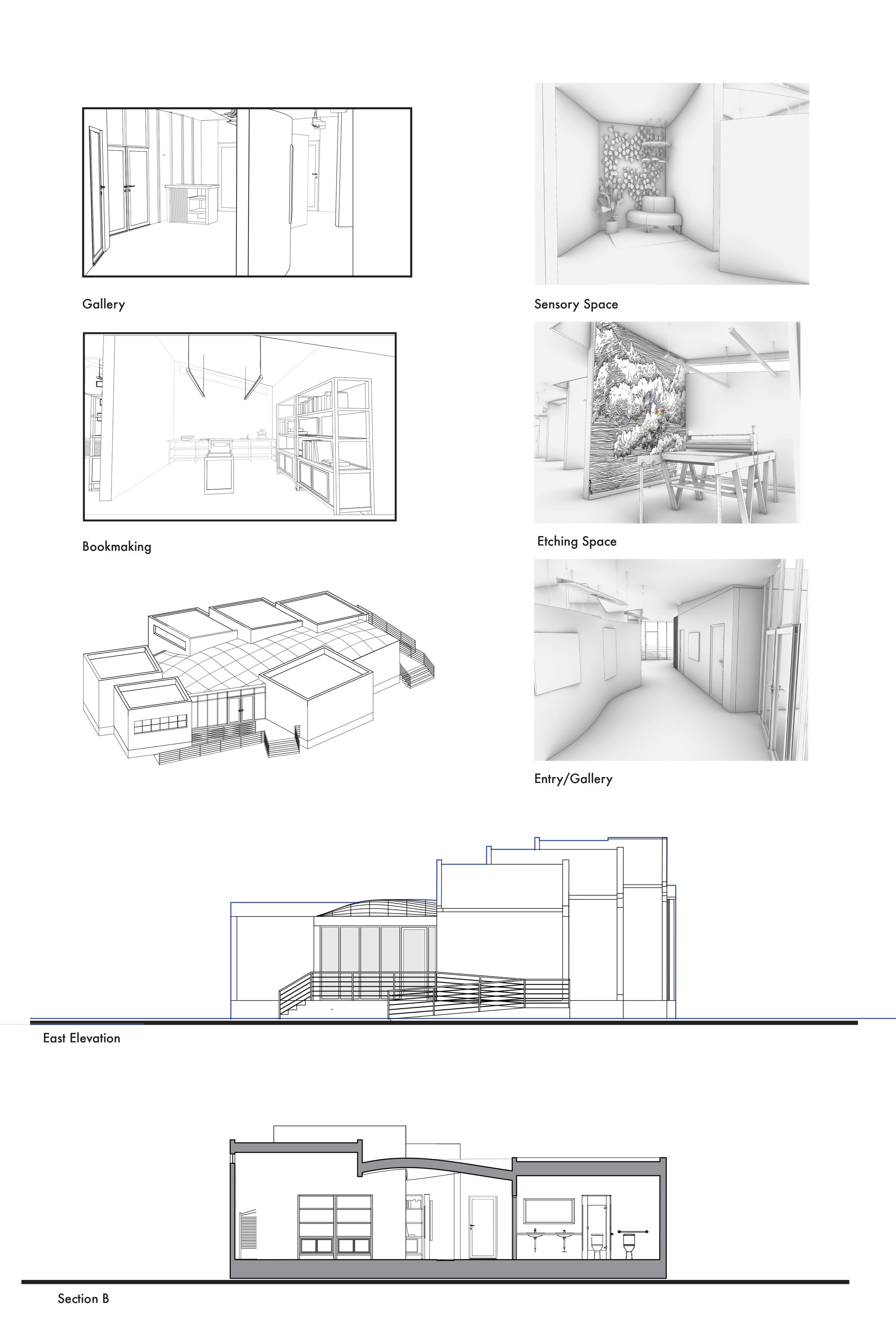
Allison Burkey
Sylvan Impressions Printmaking Studio
In the making of this project I focused on the idea of functional open space. In a printmaking studio there are many aspects of printmaking design. Taking into consideration the placement of the machines, work spaces, and storage. I wanted to incorporate the outdoors and nature into the space, so keeping this in mind, I added greenery, open windows and outdoor space to enable connection with nature both outside and in.
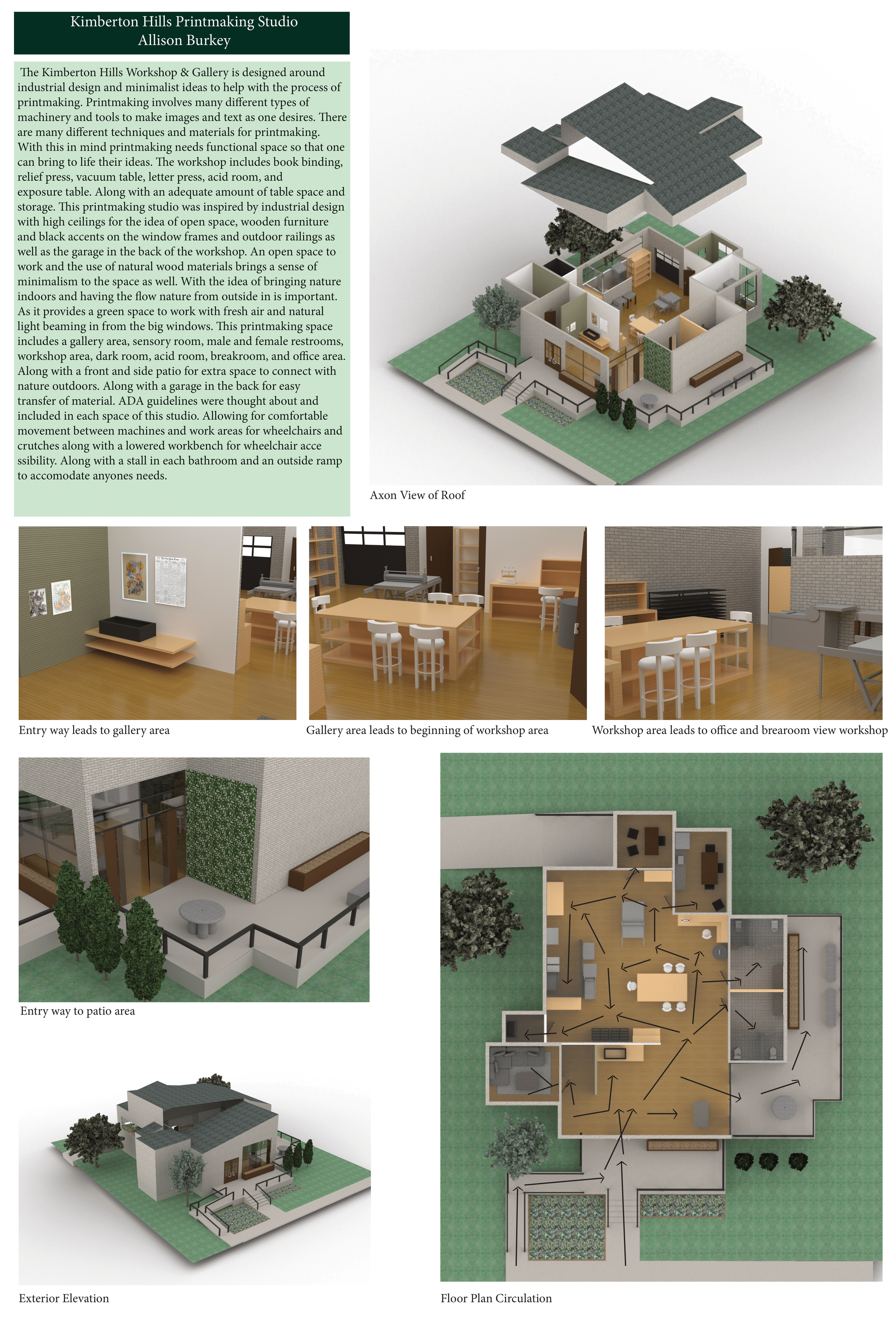



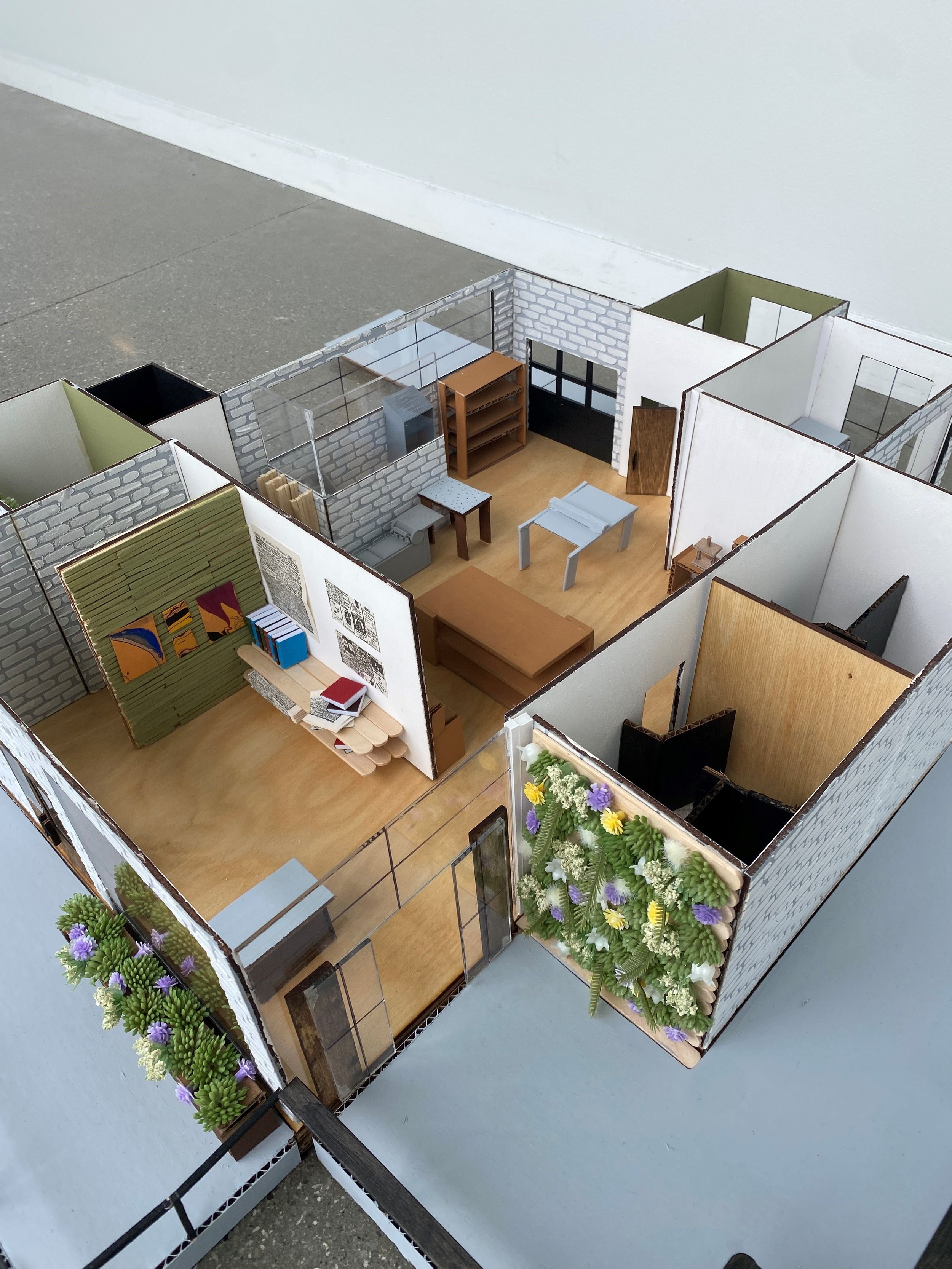
Kristin Eakin
A studio course that introduces students to foundational concepts of interior space. Topics include studies of room and its contents; color theory and interior color; design and human behavior; representation through sketching, orthographic drawing, collage, and model building; and digital techniques. Design thinking and iterative design work-process is emphasized. The studio explores interior space, embodiment, posture and spatial perception. The position of body in space is concluded in a 'Wearable Textile Studio' maintaining ADA compliance and designed through the application material, texture, color, place and human behavior.
Macy Ladd
The Laurel Studio for Wearable Textiles
The Laurel Studio for Wearable Textiles merges traditional textile craftsmanship and technology in the Camphill community of Kimberton Hills, Pennsylvania, which is a site and community designed with sustainability, handcraft and harmony with nature in mind and which is home to many with developmental and other disabilities. The Laurel Studio is designed to have a congruous design with the existing Camphill environment, in manners such as name, style, material and spatial planning. Most existing structures on the Camphill site are classic colonial home style, which the Laurel Studio represents as well, and which works to create a familiar and comfortable environment for those working within. The studio is named for the state flower of Pennsylvania, the Mountain-Laurel, as many other buildings in the community are named for native flowers. The colonial palette, which includes warm hues and wood and stone materials, is represented in the design. Colonial aspects of style are also included and represented by the rectangular facade, high central ceiling, exposed beams, and sloping sides and task lighting throughout.
Projects throughout the semester focused on textures, applied color and the body in space. ADA guidelines were introduced with this project, and students were encouraged to take measures in their studio design to promote independence for the disabled craftspeople. To help with this, the Camphill Community movement was studied as well. The Laurel Studio represents the Camphill philosophy of empowerment through its open workshop space which connects to the gallery and the separate restful breakroom and sensory spaces. The window walls and ribbon windows reinforce harmony with nature, one of the Camphill movement’s most prominent doctrines.





